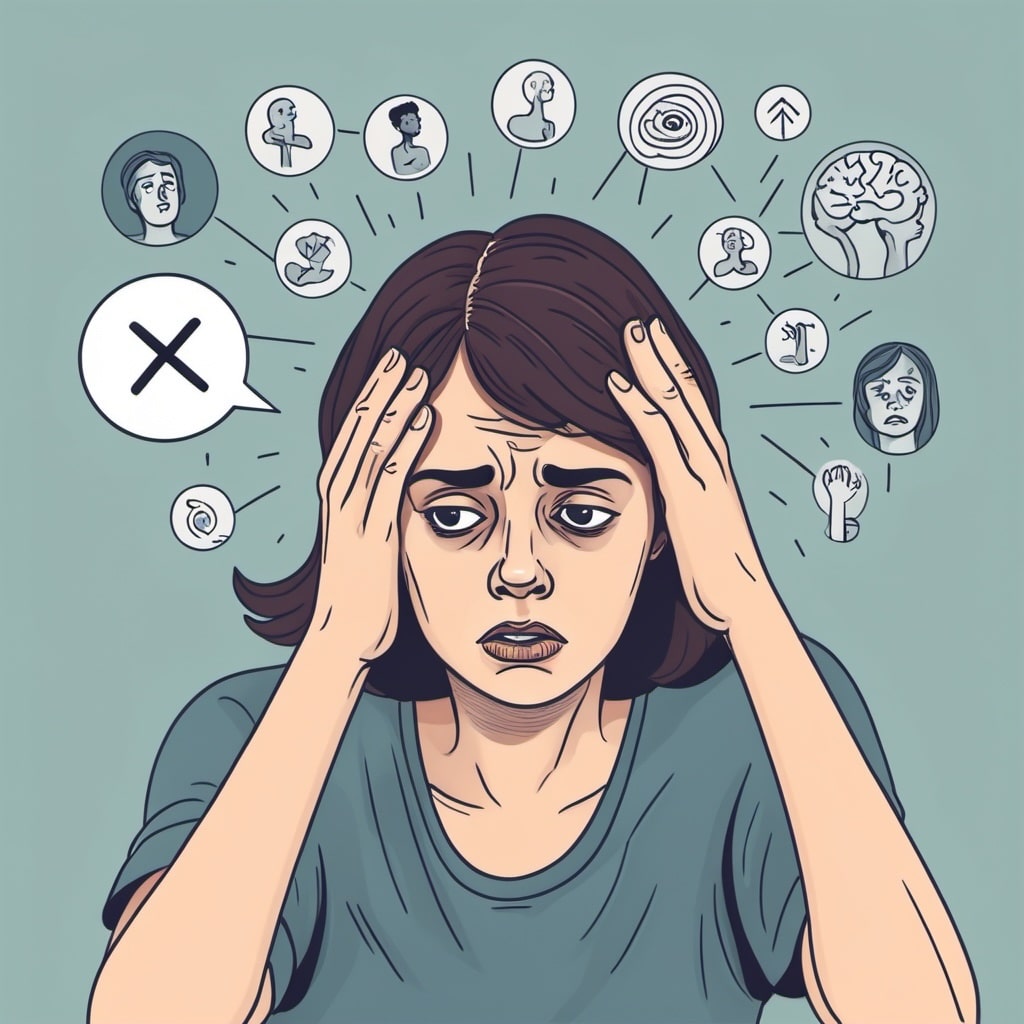When someone enters your massage studio, you may sometimes notice signs of nervousness, such as constant agitation or difficulty in relaxing. If a client is preoccupied, tense and unable to enjoy the massage, this could be a sign of generalized anxiety. But how can you tell the difference between a passing worry and chronic, pathological anxiety?
Generalized anxiety disorder, often underestimated
Generalized anxiety affects 1% of teenagers and 3% of adults, and manifests itself as excessive and persistent worry about various aspects of daily life, such as work, family or finances. Women are twice as likely to be affected. To make a diagnosis of generalized anxiety disorder, the anxiety must be present more often than usual for at least six months, and cause significant discomfort. Here are the main symptoms associated with this disorder:
- Anxiety and excessive worry in anticipation of various events or activities, present almost daily for at least six months.
- Difficulty controlling anxiety, which becomes pervasive despite attempts to control it.
- Associated physical and mental symptoms: three or more are enough to make a diagnosis, with frequent occurrence over the past six months, including:
- Restlessness, feeling “on edge”.
- Fatigability
- Difficulty concentrating, memory lapses or a blank mind
- Irritability
- Muscular tension
- Sleep disorders (difficulty falling asleep or unrefreshing sleep)
These symptoms often impair quality of life, social relationships and work performance, making it difficult for sufferers to manage day-to-day life. In some cases, anxiety can be so intense as to cause physical symptoms such as muscle pain, headaches or gastrointestinal disorders.
The origins of generalized anxiety
Generalized anxiety can result from many factors, including genetic predisposition, stressful life events or particular personality traits. Repeated exposure to stressful situations can also lead to automatic negative thoughts, reinforcing a constant state of apprehension. These chronic thought patterns keep stress levels high, leading to a vicious circle of incessant worry and physical symptoms.
Differentiating generalized anxiety from other disorders
It is essential to distinguish generalized anxiety from other anxiety or mental disorders, although it can coexist with other pathologies such as depression. Generalized anxiety is distinguished by the diffuse and persistent nature of its worries, which are not limited to a specific situation but cover various aspects of life. For example, the anxiety or worry does not concern the fear of having a panic attack (as in panic disorder), the fear of being embarrassed in public (as in social phobia), the fear of contamination (as in obsessive-compulsive disorder), moving away from home or loved ones (as in separation anxiety disorder), weight gain (as in anorexia nervosa), or the fear of a serious illness (as in hypochondria). What’s more, these concerns are not exclusive to post-traumatic stress disorder.
It’s also important to rule out other medical conditions or the side effects of certain medications that could explain the symptoms.
Treating generalized anxiety: medication and cognitive-behavioral therapy
When generalized anxiety is confirmed and symptoms persist in response to hygienic dietary advice (stopping coffee, alcohol, smoking, physical exercise), there are two types of treatment that can be combined:
Cognitive-behavioural therapy (CBT ) is one of the most effective approaches to treating generalized anxiety. It helps patients to identify and modify the negative thoughts and behaviours that contribute to their anxiety, notably through gradual exposure to problematic situations. Through relaxation techniques and stress management exercises, CBT helps patients regain lasting emotional balance.
Antidepressants such as selective serotonin reuptake inhibitors (SSRIs) and serotonin-norepinephrine reuptake inhibitors (SNRIs) or benzodiazepines (less frequently, as they interfere with CBT) can be prescribed to relieve acute symptoms. However, these treatments must be supervised to avoid dependence.
Challenges to overcome in the healing process
Several factors make recovery from generalized anxiety disorder complex:
- Constant, uncontrollable thoughts: the mind remains preoccupied with negative anticipations.
- Fatigue and exhaustion: Constant effort to manage anxiety depletes energy reserves.
- Avoidance of certain situations: Worries can lead to avoidance of certain situations, reinforcing fears.
- Constantly tense muscles: Generalized muscular tension can aggravate discomfort.
How can we make healing more accessible?
- Start with small positive actions: practice deep breathing, take a few minutes to relax.
- Professional support: Consult your GP or psychiatrist for sound medical advice.
- Surround yourself with caring people: Social support helps reduce anxiety and make you feel understood.
- Relaxation: massages, walks, meditation; every soothing gesture counts.
Conclusion
Managing generalized anxiety may seem difficult, but every small step towards calm is a victory. By combining appropriate therapeutic approaches and cultivating kindness towards oneself, it is possible to regain a better quality of life. Patience and support are essential on this road to serenity.
To remember:
- Generalized anxiety is characterized by persistent worry and affects daily, social and professional activities.
- Physical symptoms include fatigue, irritability, muscle tension and sleep disorders.
- Cognitive-behavioral therapy (CBT) and certain medications can help reduce anxiety.
- Relaxation (massage, meditation) and social support play an essential role in calming and managing anxiety.
Sources :
- American Psychiatric Association (2022). Diagnostic and Statistical Manual of Mental Disorders: DSM-5-TR.
- Vidal. Generalized anxiety disorder. Website: vidal.fr. 2021

